Department of Medicine shares education updates
Various leaders of the Department of Medicine’s education mission recently shared updates on departmental programs.
Clerkship
Nicholas “Nick” Duca, MD, recently shared updates on the Department of Medicine’s clerkship program for MD students.
As part of the department’s December newsletter, Duca wrote:
Believe it or not, the 2020 clerkship phase is coming to an end in one month! I am incredibly proud of this group of students for enduring the rapid-fire curricular changes that began in March as the pandemic accelerated. For the first time, clerkships across the country switched to remote curriculum. This new territory was both difficult to navigate but very rewarding as our faculty stepped up to work with students in telehealth, small groups, and large group sessions. Our students played important roles in patient care during this time, working closely with our high-risk, complex patient population and patients being transitioned from hospital to home.
I would like to thank all of our faculty, fellows, residents and administrative staff for creating authentic learning experiences for students during the early phase of the pandemic. We look forward to working with the next phase of students starting in February of 2021.
New and noteworthy

Frederick “Freddie” Porter
From day 1, Freddie has gone above and beyond for the program.
Regularly, we receive comments from students about how helpful, friendly and supportive Freddie is during their rotations.
Thank you, Freddie!
Shining and memorable moments
Dr. Navya Voleti, a PGY-1 trainee in the Internal Medicine Residency, was recognized by students two times in the last month for exceptional teaching on the clerkship. Thank you Dr. Voleti for always going above and beyond for the students!
Students said:
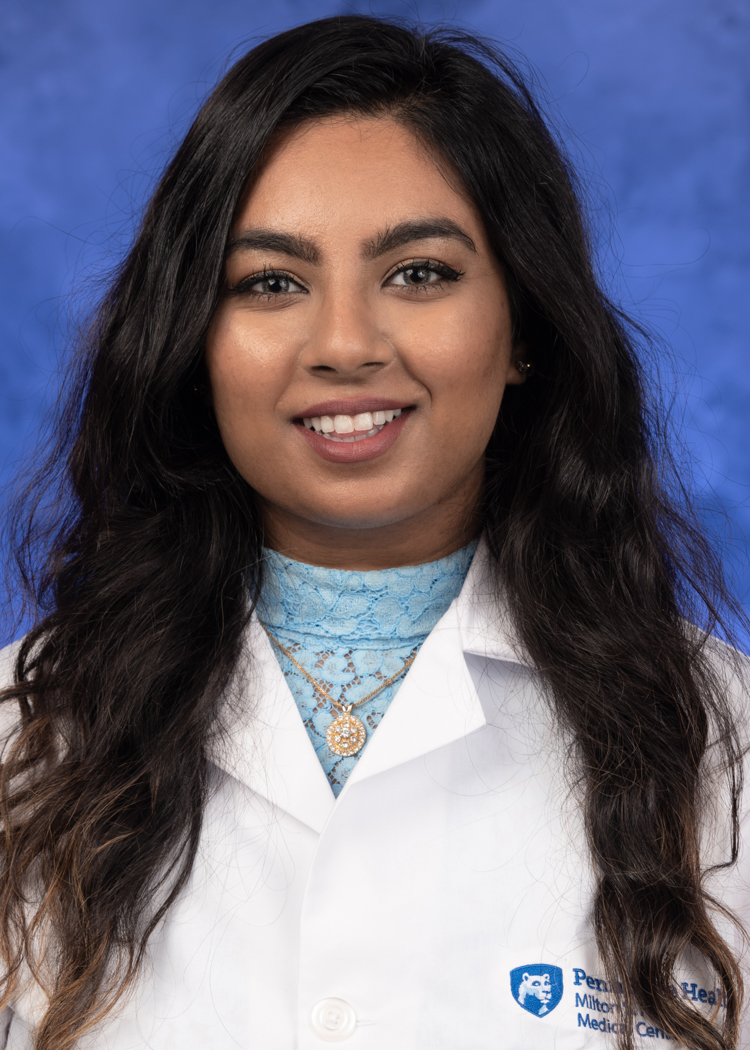
Navya Voleti
“Navya is an amazing teacher who was really passionate about teaching. Even in the midst of the hectic days, she always tried to make time for teaching. She taught me about arrhythmias, acid-base, chest Xrays, and so many other clinical pearls. I really appreciated her enthusiasm for teaching which allowed me to ask questions comfortably, no matter how small and trivial they were. She was a very positive and friendly co-worker and I enjoyed working with her very much.”
On the horizon
- Career Exploration and Synthesis rotation: Dec. 14 to 18, 2020; Dec. 19 to 23, 2020, optional for students
- Winter break for students: Dec. 19, 2020, to Jan. 3, 2021
- 2021 clerkship phase begins: Feb. 1, 2021
Student billable notes
The student billable note initiative has been a success! Students have felt that it truly added value to their rotation. They feel more engaged and receive more feedback when having the opportunity to write the billable note for their patients.
Remember:
- “Medical student” template notes are not discoverable by the billing department and should not be used (have the student use your preferred note template for your specialty instead).
- You must be present with the student at the bedside in order to use a student’s note for billing. If you see the patient independently of the student, this will not count.
Graduate Medical Education
Byron Louw, EdD, education program manager, recently shared updates on the Department of Medicine’s graduate medical education programs.
As part of the department’s December newsletter, Louw wrote:
There is unprecedented innovation and movement within the educational mission of the department. The commitment to promoting resident wellness, providing opportunities for scholarly activity for students, residents and fellows, and generally investing in our people is truly remarkable.
Unlike anytime in our lives, COVID-19 has, for one, presented new challenges that have impact our approach to recruitment in our graduate medical education (GME) programs. We have just kicked off our first all-virtual residency interview season, where we will be interviewing a record number of candidates until the beginning of February. All of our 13 fellowship programs in the department have also just completed their first entirely virtual interview season – a first for everyone! Faculty, fellows and residents and our outstanding staff have all come together to make this massive feat possible; they have shown flexibility, creativity and tenacity! There is no doubt that our people are our most valuable asset.
New and noteworthy
- This year, the Internal Medicine Residency program – in partnership with specific sub-specialty fellowships – will be recruiting for two more physician-scientists for the ABIM Research Pathway. We hope to build on this newly formalized program in the department and appreciate everyone’s enthusiasm to participate in this important recruitment effort.
- As part of a comprehensive revamp of the research curriculum in the residency program, Dr. Andrew Tinsley has developed a competency-based research curriculum. The timeline for this curriculum supports building of research competencies. One major initiative of the research revamp has been the introduction of the Research MaTES program. In addition to mentoring trainees on multiple research projects, Research MaTES gives faculty access to the powerful MarketScan database. MarketScan is a database of commercial, employer-based insurance claims representing approximately 100 different insurance companies and more than 100 million covered lives. In addition, faculty do not need IRB approval to make use of MarketScan and receive statistical and data analysis support from Public Health Sciences Center for Applied Health Economics. Many publications in high-impact journals have come from projects using the MarketScan database. The Research MaTES program is resident-led and they select a faculty mentor and propose a topic and a team that should include fellows, co-residents, and potentially medical students too. The program had 16 project proposals recently submitted and more than 30 faculty from all divisions offered to mentor residents on these projects. See details on these programs here.
- The Education Council has recently revised the evaluation form that is used by residents, so that there are behavioral anchors associated with numerical scores that range from 1 to 5. This change allows faculty members to be able to review the behaviors that would be identified as higher performing and adapt as they see fit. Also, this allows residents to more objectively evaluate their time with residents. We now have a standardized evaluation form that fellows across the department use to evaluate their faculty. This will allow faculty working with fellows to be able to compare their individual and divisional scores with the rest of the Department, thereby providing some context for their own scores. In alignment with the changes in the resident evaluation form of faculty, the fellow evaluation of faculty form also includes behavioral anchors. Examples of the forms are available in New Innovations.
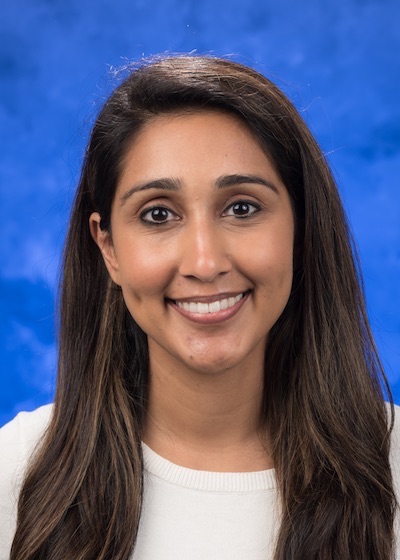
Rubia Ahmed, DO
Rubia Ahmed, DO, a PGY-3 resident in the Internal Medicine Residency, was recognized by a patient while she worked with Chris Fan, MD.
“Dr. Fan and Dr. Ahmed really listened to my issues. Dr. Ahmed determined that a med prescribed by another of my providers could be contributing to my issues (I believe she was correct as my problems seem to be subsiding since stopping the medication). Everybody was extremely professional, courteous l, etc. It’s why I make the drive!”
“Dr. Fan is really good provider he is clear when speaking and knowledgeable. I feel very secure with his care.”
The Emergency Department providers recently recognized James “Jim” Dreer, DO, a PGY-1 resident in the same program, for his exceptional patient care.
“Our patient has Down syndrome and her sister helps to provide a lot of care for her and she became overwhelmed with everything going on today that he told the sister to go for a coffee break and he would sit with our patient while she stepped out for a minute.”
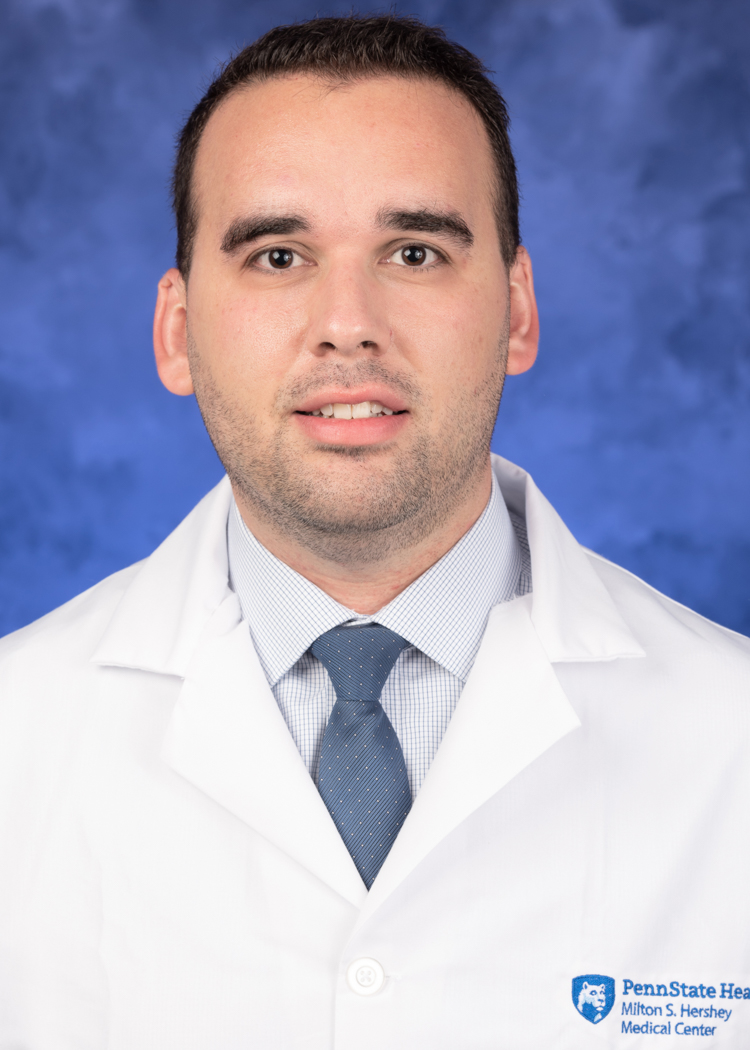
James Dreer, DO
On the horizon
The Education Council is currently working on a process to be able to get more frequent feedback to faculty about their teaching. In its current form, faculty with three or more evaluations would receive a quarterly report of their teaching scores from students, residents and fellows.
The Education Council is reviewing the rotation evaluation forms that residents use to evaluate their rotations. We hope to have prompts that will provide meaningful feedback to divisions as they commit to continually improving the educational experience they provide for residents.
The residency program will be hosting an event with coffee and snacks where faculty will be able to stop by during certain times and do evals, chat, ask questions, find out what’s going on with the residency program and talk about how they can be more involved. Please be on the lookout for this information!
Spotlight on our people
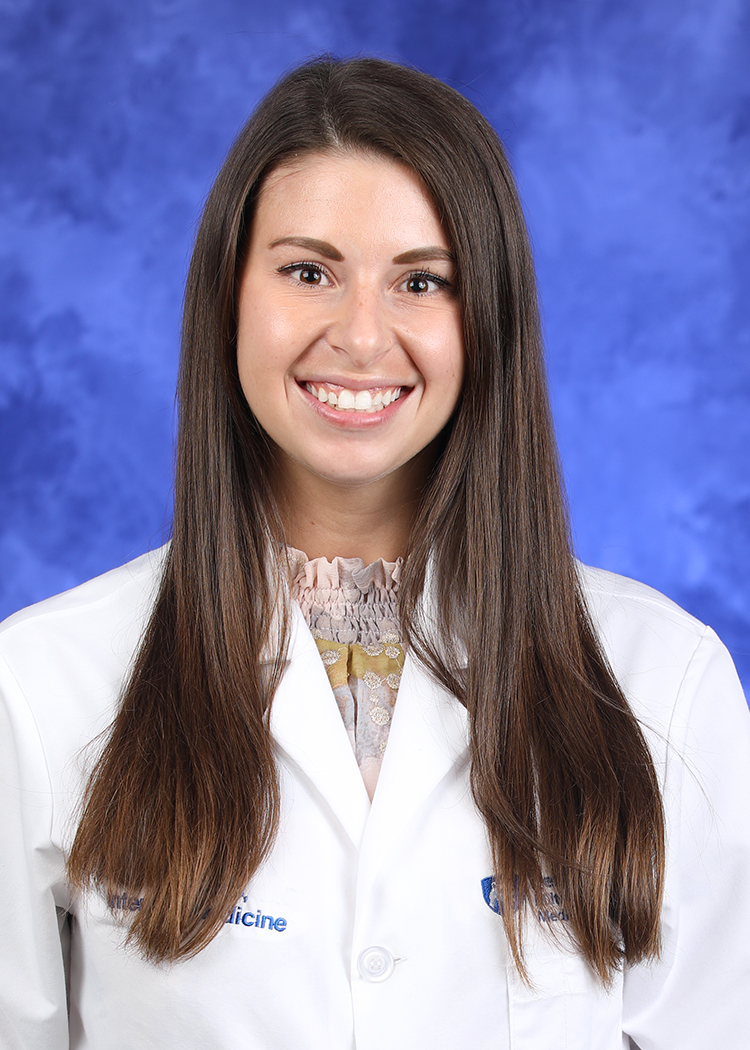
Kara DiJoseph, DO
DiJoseph is a remarkable PGY-3 resident in the Internal Medicine Residency and is one of our rising chief residents. She has been recognized by medical students for her exceptional teaching, she has volunteered to create an IRB handbook for her co-residents, and she has been recognized by nursing staff for her exceptional interprofessional skills and teamwork. Kara has also been productive in research, producing several posters and publications. And this month she did something special while working as the resource resident in the clinic.
DiJoseph was also recognized by Dr. Alia Chisty for providing excellent patient-centered care for an 88-year old woman while she was resource resident in the clinic. She recognized the patient’s multiple medication allergies and resistant hypertension could not be managed over the phone and that she needed to come into the clinic for evaluation. No providers were available, so DiJoseph saw the patient herself.
Odds and ends
The education mission also shared these updates:
Clerkships: Strategies to engage learners
A notice went out to all faculty highlighting a Zoom educational retreat being offered 8 a.m. to noon Dec. 5, 2020, by the Woodward Center for Excellence in Health Sciences Education, on “Choosing Strategies to Engage Learners.” If interested in attending, or for more information, email Lori Gelatt at lgelatt@pennstatehealth.psu.edu.
Reminder: MOC credits for Grand Rounds
The department continues to participate in a pilot where participants at the Department of Medicine Grand Rounds will earn Maintenance-of-Certification (MOC) credits in addition to their regularly earned CME credits. Participants will be invited to answer four multiple-choice questions based on the content of the Grand Rounds session that they view, which must be completed in order to earn the MOC credits. (Participants are not required to answer the questions in order to earn CME credits.)
This is a terrific opportunity for our faculty to earn MOC credit!
Jump to topic
Search
Internal Medicine Residency Research Curriculum Details
Orientation
Intro to research
- Receive guidebook
- Citi training
- IRB at PSU
PGY-1 (first six months)
Research workshops
(Noon conference and/or AHD. Workshops are also available online and potentially repeated after hours as needed.)
- Literature review/Endnote
- Study design and biostatistics 101
- Available datasets
- Data entry (REDCap)
- Data analysis (SPSS)
PGY-1 (second six months)
Research workshops
(Noon conference and/or AHD. Workshops are also available online and potentially repeated after hours as needed.)
- Mentor presentations
- Writing for publication
- Instant case report
- Systematic review/meta-analysis
- Public Health Sciences/Clinical and Translational Science Institute presentation
30-minute meeting research APD (Tuesdays 1 to 2 p.m.)
- Review acquired skills/deficits
- Ideas for projects/mentors
- Review LRT/conference deadlines/funding opportunities
Goals for end of year 1
- Every PGY-1 trainee will have identified a research mentor
- Research skills checklist complete
- Project idea identified
- Case report written
PGY-2 and PGY-3 (first third)
Research workshops
- Abstract/poster review
- Troubleshooting/APD check-in
PGY-2 and PGY-3 (second third)
Research workshops
- Troubleshooting/APD check-in
- Abstract/poster review
PGY-2 and PGY-3 (final third)
Research workshops
- Troubleshooting/APD check-in
- Abstract/poster review
- Resident presentations to peers – research update
Troubleshooting/APD check-in key components
- Helping residents keep up momentum, overcome obstacles and meet deadlines
- Plan is for these meetings to take place during noon conference, separate from intern lectures
Lion of Research award
- At the end of the program, the Lion of Research award will be given
Goals for end of year 2/3
- Research skills checklist complete
- Ongoing project(s) with mentor
- Minimum one abstract at regional/national meeting
- Successful job/fellowship match
- This IRB-exempt initiative promotes teamwork and mentorship and is designed to significantly increase research opportunities for all residents.
- It uses the Public Health Sciences Center for Applied Health Economics to help take projects from conception to completion.
- There is the potential for up to six Marketscan/Public Health Sciences awards per year, with shared funding from involved divisions.
- Any internal medicine resident can be involved.
- The goal is to remove significant barriers to getting research done during residency.
- The hope is to increase research productivity (potential for multiple publications per funded project) for both trainees and junior faculty.
- Ideal projects are team-based, with selection based on merits of study (clinical relevance, potential impact, etc.); potential for mentorship; and involvement across the training continuum (junior faculty, fellow, internal medicine resident, medical student).
Funded MarketScan projects open to all internal medicine residents

- Ideal funded projects will have the potential for several related studies
- This promotes the potential for multiple publications per project, impacting both trainees and junior faculty
- Involvement fosters collaboration and mentorship across the trainee continuum
Research MaTES MarketScan example
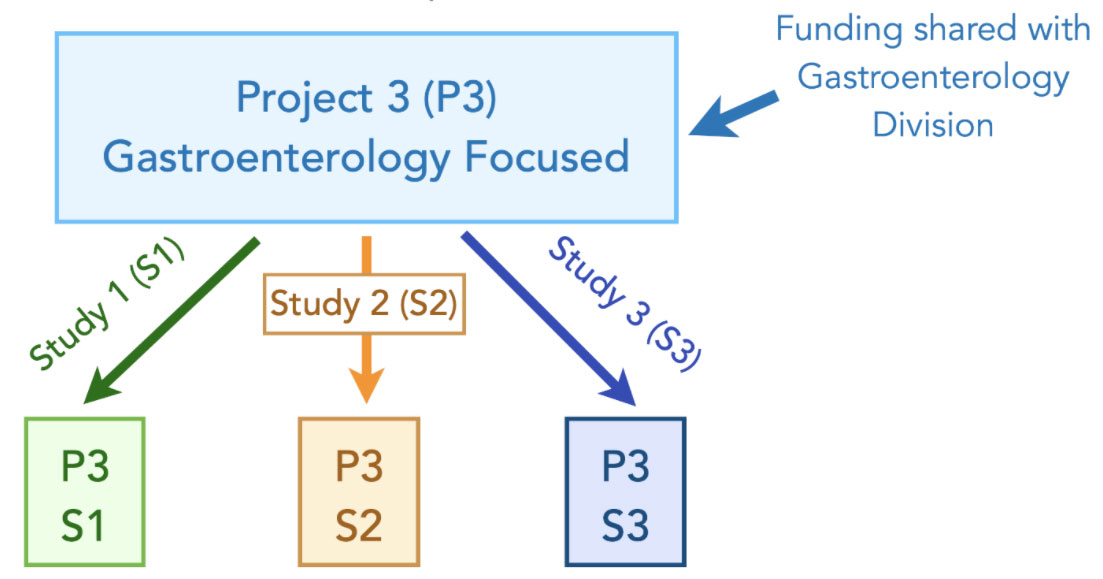
Study 1
- P3 S1 resident leader
- Residents (one or two)
- GI faculty
- Medical student
Study 2
- P3 S2 resident leader
- Residents (one or two)
- GI fellow
- GI faculty
- Medical student
Study 3
- P3 S3 resident leader
- Residents (one or two)
- GI fellow
- GI faculty
- Medical student
If you're having trouble accessing this content, or would like it in another format, please email Penn State Health Marketing & Communications.
